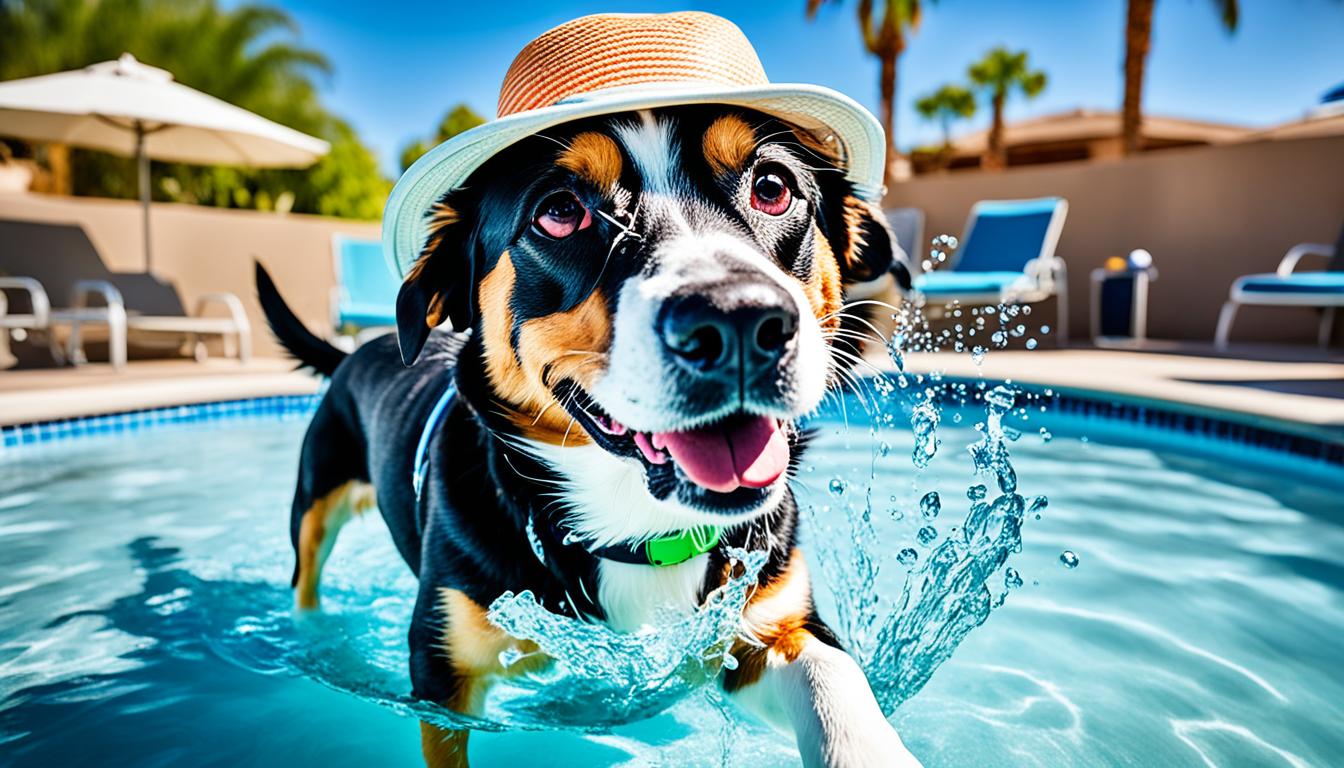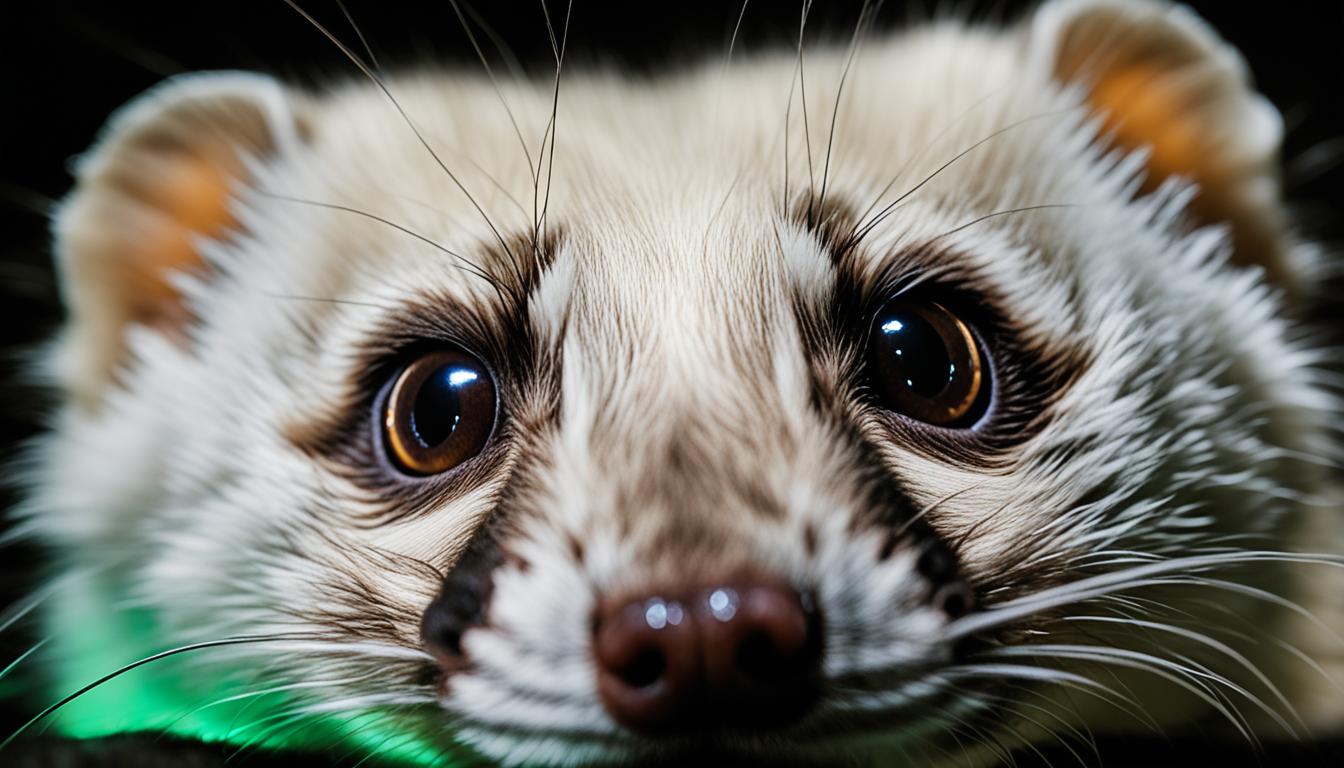To capture animals in their natural habitat, focus on patience and understanding their behavior. You'll often need to wait for hours to get that perfect shot, so don't rush. Invest in a good telephoto lens (200mm or longer) for detailed images without disturbing wildlife. Use effective hides and respect ethical guidelines to maintain a safe distance. Familiarize yourself with camera settings and practice your techniques to improve your skills. Remember, every outing is a learning opportunity. Stick around, and you'll uncover more tips to enhance your wildlife photography journey.
Key Takeaways
- Understand animal behavior to time your shots effectively and capture them during their active periods.
- Use telephoto lenses (200mm or longer) to photograph wildlife from a safe distance without disturbing them.
- Practice patience by spending extended time in one location, allowing animals to acclimate and display natural behaviors.
- Employ ethical photography practices, maintaining a safe distance and avoiding actions that could harm wildlife or disrupt their habitat.
- Optimize camera settings, using high shutter speeds and shooting in RAW for better image quality and post-processing flexibility.
Understanding Wildlife Photography
Understanding wildlife photography requires a blend of patience and insight into the natural world. This genre focuses on capturing animals in their natural habitats, emphasizing their behavior without the influence of domestication or staging.
To excel, you need to invest time, often waiting hours or even days for that perfect shot. Remaining still and quiet allows you to avoid disturbing the animals, which is vital for successful photography. Exploring diverse landscapes, such as those found in New England camping destinations, can provide unique opportunities for wildlife encounters.
Understanding animal behavior is essential. Different species have specific active times and feeding locations, so knowing when and where to shoot can make all the difference. For example, some birds may be most active during dawn, while mammals might venture out at dusk. By observing these patterns, you enhance your chances of capturing stunning images.
Ethical considerations also play a significant role in wildlife photography. Always adhere to principles like "do no harm," which guide you to minimize your presence and avoid actions that could disturb wildlife or their habitats.
Types of Wildlife Photography

Wildlife photography offers a rich tapestry of genres, each with its own unique challenges and rewards. One popular type is bird photography, where you capture diverse species in flight or at rest. This requires fast shutter speeds and an understanding of bird behavior to anticipate their movements.
Studies indicate that animals, much like our beloved cats, can show emotional connections and behavioral responses, which can help photographers understand their subjects better and enhance their shooting experience emotional attachment in cats.
Another fascinating area is mammal photography, focusing on larger terrestrial animals. Here, long telephoto lenses allow you to safely capture stunning images from a distance without disturbing the wildlife.
If you're drawn to the aquatic world, underwater photography lets you explore marine life. This genre necessitates specialized camera gear, including housing for your camera and proper buoyancy control to get those breathtaking shots beneath the surface.
Lastly, macro wildlife photography zooms in on the smaller creatures of nature, like insects and plants. This type emphasizes close-up techniques and often requires dedicated macro lenses to highlight intricate details.
Each genre of wildlife photography demands specific skills and techniques, but they all share the thrill of capturing the beauty of the natural world. Choose your focus, and immerse yourself in the adventure of wildlife photography!
Essential Equipment for Wildlife Photography

When you're gearing up for wildlife photography, choosing the right camera is just the beginning.
You'll need telephoto lenses to capture those distant animals clearly and a few essential accessories to enhance your shooting experience.
Additionally, consider bringing along equipment that's budget-friendly and effective, similar to how budget-friendly vacuum cleaners can be a great choice for maintaining cleanliness without breaking the bank.
Let's explore what equipment can make your wildlife photos truly stand out.
Camera Selection Considerations
Choosing the right camera is essential for capturing stunning wildlife images. For wildlife photography, you'll want to select a DSLR or mirrorless camera system. These options offer versatility and performance, especially when photographing fast-moving subjects.
Look for a camera body with high ISO capabilities to adapt to varying lighting conditions, ensuring you capture sharp images of active animals. Additionally, maintaining a consistent exposure and understanding your camera settings can greatly enhance the quality of your shots, much like perfecting espresso extraction time in coffee brewing.
When it comes to lenses, telephoto lenses are your best bet. Aim for a minimum focal length of 200mm to photograph distant or elusive wildlife without disturbing them. If you already have a lens you love, consider using a teleconverter as an economical way to extend its focal length. This allows you to capture more detail at a distance without investing in larger, pricier lenses.
Don't forget to shoot in RAW format! This will give you greater detail retention and flexibility during post-production, enhancing the overall quality of your wildlife images.
Importance of Lenses
Lenses play a pivotal role in wildlife photography, directly influencing the sharpness and clarity of your images. Selecting the right lens is imperative; telephoto lenses, typically 200mm or longer, are essential for capturing distant or elusive subjects without disturbing them.
For instance, when you venture to breathtaking destinations for wildlife photography, diverse activities including water sports and hiking can enhance your experience and understanding of animal behaviors and habitats. The choice of lens not only affects image quality but also impacts your overall shooting experience, so understanding how your lens is compatible with your camera body is fundamental.
Using a lens with a wide aperture, like f/2.8 or f/4, allows for better performance in low light conditions, which is often necessary during early morning or late evening shoots. This capability can make a significant difference when you're trying to photograph animals in their natural habitat.
If you're looking to extend your focal length without breaking the bank, consider using teleconverters. They can effectively increase your reach, allowing you to capture those distant shots without investing in larger, more expensive lenses.
Essential Accessories and Gear
Having the right accessories and gear can make a significant difference in your wildlife photography experience. For wildlife photographers, the right equipment guarantees you capture stunning images, even in challenging conditions. Here are some essential accessories you'll want to take into account:
- DSLR or mirrorless camera: Choose one for versatility and superior performance. A quality camera also allows you to utilize features like headphone amplifiers that enhance your audio experience during filming.
- Telephoto lens (300mm to 600mm): Vital for capturing distant wildlife without disturbing them.
- Tripod or monopod: Stabilizes your camera for sharper images, especially with longer lenses.
- Extra batteries and memory cards: Wildlife photography often means long waits; be prepared to shoot extensively.
- Rain cover: Protects your gear from unexpected weather changes.
Using a camera with high ISO capabilities and a fast autofocus system is essential for achieving clear images in low light or with fast-moving subjects.
Additionally, shooting in RAW format enhances your image detail and provides greater flexibility during post-production.
Always verify your lens is compatible with your camera body for peak performance, and don't hesitate to experiment with different lenses to discover what works best for your style.
Ethical Considerations in Wildlife Photography

Ethical considerations in wildlife photography are essential for preserving the delicate balance of nature. Engaging in ethical wildlife photography means adhering to the principle of "do no harm." Always maintain a safe distance from animals to prevent causing stress or disrupting their natural behaviors.
Additionally, understanding the impact of environmental factors, such as air quality and pollution, can help you choose better locations for your photography sessions. Avoid feeding wildlife, as this can create a dependency on human food and interfere with their instinctual foraging.
To protect sensitive habitats, be cautious about sharing specific locations of endangered species. Increased human activity can threaten their survival, so it's vital to keep these areas discreet.
When photographing wildlife, you should minimize your presence and noise. Animals are incredibly sensitive to disturbances, and your actions can lead to altered behaviors or even abandonment of nests and young.
Strategies for Successful Wildlife Photography

Capturing stunning wildlife photographs requires a blend of skill, patience, and strategy. To improve your chances of photographing wildlife successfully, consider these wildlife photography tips: Engaging in outdoor play can enhance your observational skills, allowing you to notice animal behaviors more effectively, which is essential for wildlife photography.
Additionally, encouraging children to explore nature can foster a deeper appreciation for wildlife, ultimately benefiting your photography subjects through the importance of play.
- Utilize effective hides, like camouflaged tents or vehicles, to minimize detection.
- Research and scout local habitats to identify animal routines.
- Practice patience by spending extended time in one location.
- Use a long lens (200mm or higher) to capture detailed images from a safe distance.
- Optimize your shooting settings, using faster shutter speeds (at least 1/1000th sec).
Tips for Beginners in Wildlife Photography

What makes wildlife photography so fascinating for beginners? It's the thrill of capturing animals in their natural habitat and the challenge of finding them. Engaging with nature can also draw parallels to biohacking essentials where understanding your surroundings enhances your overall experience.
To get started, familiarize yourself with your camera settings. Use continuous autofocus and adjust your shutter speed to at least 1/1000th of a second to effectively freeze motion. Investing in a long lens, ideally between 300mm to 600mm, allows you to capture detailed shots without disturbing wildlife.
Research local wildlife species and their habits using apps like iNaturalist. This knowledge can greatly increase your chances of successful photography outings. Remember, patience is key. Spend extended periods in one location, letting wildlife acclimate to your presence for more natural behavior captures.
After each outing, continually review and analyze your photos. Identifying areas for improvement will help refine your skills over time.
Wildlife photography isn't just about the perfect shot; it's also about enjoying the process and learning from each experience. Keep practicing, and soon you'll find yourself more comfortable and confident in your ability to capture the beauty of wildlife.
Insights From Experienced Photographers

While diving into wildlife photography, you'll find that tapping into the insights of experienced photographers can greatly elevate your skills.
They emphasize the importance of understanding animal behavior and routines, which can considerably increase your chances of capturing compelling images in the wild.
Additionally, engaging with other photographers can provide fresh perspectives and inspiration, much like how reviving old friendships can bring new energy to your creative pursuits.
Here are some key takeaways from seasoned photographers:
- Learn animal behavior: Observe how animals interact with their environment for better shot opportunities.
- Develop a unique style: Experiment with different techniques to express your personal artistic vision.
- Collaborate with others: Engage with fellow photographers to share ideas and enhance your skill set.
- Participate in workshops: Take advantage of learning experiences that cover advanced techniques for capturing animals.
- Utilize backstories: Adding context to your images can create emotional depth and make your photos more impactful.
Making Wildlife Photography a Career

If you're considering making wildlife photography your career, building a strong portfolio is essential to attract clients.
You'll find that income can vary widely based on your experience and the opportunities you seize, like networking and collaborating with others in the field.
Engaging in expeditions or organized safaris can open doors and help you grow both your skills and connections.
Building a Strong Portfolio
A strong portfolio is essential for turning your passion for wildlife photography into a successful career. To capture the attention of potential clients and employers, you need to showcase a diverse range of wildlife photographs that highlight different animals, environments, and behaviors.
Here are some tips to help you build a great wildlife portfolio:
- Include mesmerizing images that reflect your unique style and growth.
- Regularly update your portfolio to feature your best work.
- Participate in organized safaris and expeditions to capture high-quality images.
- Integrate behind-the-scenes stories to enhance the emotional impact of your images.
- Build a strong online presence through social media and personal websites.
Income Variability and Opportunities
Building a strong portfolio is just the beginning of your journey in wildlife photography. As you navigate this highly competitive field, you'll encounter income variability that can swing from minimal earnings to substantial financial rewards. Your skill level and market demand play essential roles here.
In 2018, the average annual salary for wildlife photographers hovered around $34,000 USD, but many successful wildlife photographers earn much more by leveraging their photography captures effectively.
To enhance your marketability, consider participating in organized safaris and expeditions. These experiences not only enrich your portfolio but also connect you with other professionals in the field. Selling your work to stock photography companies, magazines, or art galleries can open additional income streams beyond traditional sales.
Engaging in collaborations for research projects can also provide unique opportunities to diversify your earnings.
Starting as a hobbyist is common, but with dedication and continuous practice, you can shift into a full-time role with nature publications over time. Focus on building that strong portfolio and adapting to market trends to maximize your income potential in wildlife photography.
Networking and Collaboration Benefits
Connecting with fellow wildlife photographers can greatly enhance your career prospects. By actively networking and collaborating, you'll gain insights that can elevate your work. Here are some benefits of building these connections:
- Significant collaborations with other photographers
- Opportunities to participate in workshops and expeditions
- Feedback and support from wildlife photography communities
- Engagement with conservation organizations for impactful projects
- Mentorship from established professionals in the field
When you network, you tap into a wealth of shared experiences that can inspire new creative approaches and techniques.
Participating in photography workshops not only hones your skills but also helps you meet industry professionals who might offer future job opportunities.
Joining online and offline wildlife photography communities allows you to showcase your work and connect with like-minded individuals enthusiastic to collaborate.
Moreover, engaging with conservation organizations can lead to projects that showcase your photography while contributing to essential conservation efforts.
Finally, building a strong professional network opens doors for mentorship opportunities, providing guidance that accelerates your career growth in wildlife photography.
Embrace these connections; they can be the catalyst for your success.
Frequently Asked Questions
How Do Nature Photographers Get so Close to Animals?
Nature photographers get close to animals by using hides, understanding animal behavior, and being patient. They scout locations, wait quietly, and use telephoto lenses, ensuring they capture stunning images without disturbing the wildlife.
How Do Photographers Take Pictures of Wild Animals?
You blend patience with skill, balancing distance and detail. By understanding animal behavior, using long lenses, and scouting locations, you capture stunning images that reveal the beauty of wildlife without disturbing their natural routines.
What Are the Best Settings for Animal Photography?
To capture animals effectively, use a fast shutter speed of at least 1/1000th of a second, set your camera to continuous autofocus, shoot in RAW, and adjust your ISO based on lighting conditions.
How to Take Wildlife Photos Like a Pro?
Imagine you're a knight, silently waiting in the forest. To take wildlife photos like a pro, invest in quality gear, understand animal behavior, use fast shutter speeds, and practice patience for those breathtaking moments.
Conclusion
In wildlife photography, patience is key—after all, "good things come to those who wait." By understanding the nuances of your craft, choosing the right gear, and respecting the animals you're capturing, you can create stunning images that tell powerful stories. Whether you're just starting out or looking to turn your passion into a career, remember that every shot is a chance to connect with nature. So grab your camera and venture into the wild; adventure awaits!










